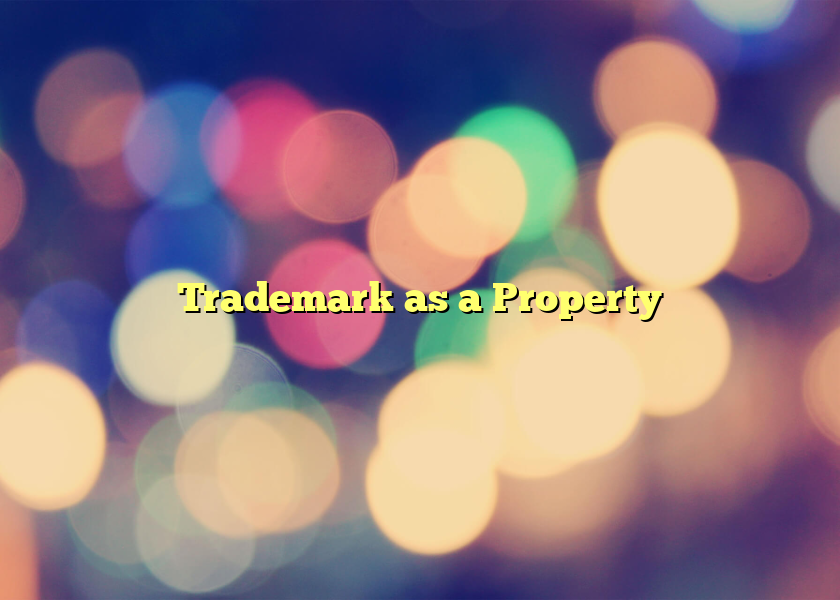Trademark as a Property
Intellectual property is a name used to point out an assortment of legal privileges to a buffet of ideas, information or other works in an expressed concrete structure. The proprietor of this legal privilege is licensed to implement the exclusive rights on his/her property within the intellectual property law’s prerogatives.
By definition, intellectual property refers to the issue that what the human mind has invented or produced can be considered as a property and can be protected by the law. It signifies the precise description of legal rights endowed upon inventors, authors, and other certain property owners.
Trademark is considered as an intellectual property alongside with copyrights; patents, industrial design right, and trade secrets.
As an overview, patents are granted to new and practical inventions and allow the patentee the right to solely exploit the commercial potential of the invention for a certain amount of time. The purpose of industrial design right is to guard the structure of design or style of an object such as furniture or spare parts. While the realm of responsibility of copyrights are creative works; and it provides the holders the privilege to be in command of the work’s adaptations or reproductions for an agreed upon period of time. Lastly, trade secrets are non-public information related to proprietary enterprise information and that its public revelation is deemed unlawful.
To return to the main subject, a trademark is any sign that allows identification of the commodities and services that are produced by a company or an individual. A trademark can be a single or a collection of words, designs, icons, letters, numbers, or symbols. It is practically the façade of a company that promotes their commercial marketability power to the public. But it can be also used to merely identify a non-corporate organization or club.
Other than its purpose of distinguishing a product or a service, it also endows exclusive rights and protection to the asset or property claimed by the owner. Although the time span of exclusive protection for the said mercantile properties may vary, trademark registration can be extended for an indefinite period of time as long as the owner can pay the additional fees. Protection of commercial properties by trademark laws is implemented by magistrates. These magistrates have the power to obstruct trademark infringement.
Trademark’s primary purpose is to pointedly name the origin or source of the commodities. It is basically a sort of symbol of origin or another way of marking a property. This type of utilization of trademark is called trademark use. The owner of the trademark insists on the rights through the blockage of illegal usage by competitors.
Rights to the trademark take place after completing registration of the mark associated with a certain variety or single type of goods and services. But it may be necessary to instigate legal proceedings to thwart of illegal use of the mark outside the jurisdiction of the law. But trademark law does not eliminate the use of the mark or symbol by the hoi polloi or public.
When one looks at it clearly, trademark supports global commerce through financial returns and commercial exposure of the marketable properties. Protection of trademarks also includes the obstruction of unreasonable rivals and the prevention of imitators to utilize the same distinguished signs to sell their own products, services, or properties. This scheme practically facilitates fair production and enterprise of mercantile goods, services, and properties encouraging the advancement of global trade.
But this organization of commercial trade has its critics, too. There are others that view the grand system of intellectual property as intellectual protectionism. There are arguments as to whether the laws concerning intellectual properties function for the benefit of the global citizenry. It is also deliberated if the protection the laws provide is suitable within the context of originality developed from facts derived from tradition, folklore, legends, or myth as well as patents intended for business techniques.
The provision of international property laws of rights can be deemed innately off-putting. It consequently endows the international property holder the right to keep out competitors from violating their control and regulation of the products and services.
Last but not least, the intellectual property laws’ endowment of exclusive rights and/or privileges can be reassigned or loaned to third parties with or without due consideration. Just like other types of property, intellectual property, in this case, trademark property, can also be loaned or mortgaged to other people. It can be even utilized as a security for a loan, too!
